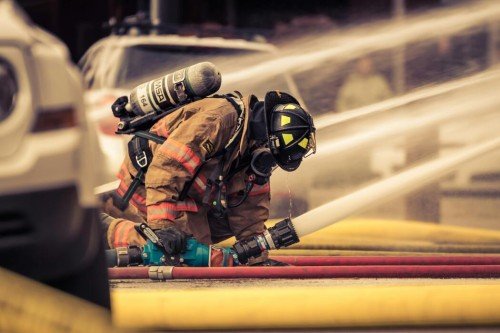
How Fire Prevention Research Saves Lives
- August 21, 2025
- Fighting Flames with Science
Fire is one of humanity’s oldest discoveries, yet it remains one of our greatest dangers. From devastating wildfires that destroy entire ecosystems to household accidents caused by faulty wiring, fire poses constant threats to life and property. Modern science, however, is turning the tide. Fire prevention research is advancing in ways that not only protect communities but also save countless lives each year.
The Evolution of Fire Safety Research
Decades ago, fire safety focused primarily on reactive strategies, such as fire extinguishers, sprinklers, and emergency evacuation procedures. While these remain vital, the emphasis today has shifted toward prevention. Research now explores how to reduce the risk of fire starting in the first place and how to design buildings, materials, and environments that minimize fire spread. For example, scientists are developing fire-resistant building materials such as treated wood, composite panels, and special coatings. These materials can withstand high temperatures far longer than conventional options, giving residents and firefighters precious extra minutes to respond.
Understanding Fire at the Molecular Level
To prevent fire effectively, researchers study it at its core: the chemistry of combustion. By analyzing how flames ignite and spread, scientists can create new compounds that inhibit burning. One area of progress involves flame-retardant chemicals, which are now being designed to be both safer for humans and more environmentally friendly. This kind of molecular research has implications across industries, from construction and aviation to clothing and furniture manufacturing. Every advancement in understanding combustion brings us closer to everyday materials that are inherently safer.
Wildfire Research: Protecting Ecosystems and Communities
While structural fires are a major concern, wildfires have emerged as one of the most pressing global threats. Climate change has intensified fire seasons, making wildfires more frequent, larger, and harder to control. Fire prevention research now looks at not just suppressing wildfires but predicting and mitigating them. Satellite imaging, climate modeling, and artificial intelligence allow researchers to identify high-risk areas long before flames erupt. Controlled burns, deliberately setting small, contained fires, are another result of such research. These reduce flammable undergrowth, making large-scale wildfires less likely.
International cooperation is essential in this field. Countries like Australia, the United States, and Spain share data and best practices to combat wildfires, demonstrating how collective knowledge strengthens prevention strategies.
Smart Technology in Fire Prevention
Technology plays an increasingly important role in fire safety. Smart sensors can detect early signs of smoke, heat, or chemical changes in the air. Unlike traditional alarms, these systems can send alerts directly to fire departments, property owners, and even smartphones, reducing response times dramatically. In urban planning, smart city infrastructure integrates fire prevention research into its design. For instance, AI-powered traffic systems help emergency vehicles reach fire sites more quickly, while drones are used to monitor hazardous areas where human inspection is too risky.
The Human Element in Fire Prevention
Despite all the technological advancements, education remains a cornerstone of fire prevention. Research consistently shows that awareness campaigns reduce fire-related injuries and fatalities. Simple practices, such as teaching children how to react during a fire drill, ensuring households have functioning smoke alarms, and spreading knowledge about safe cooking practices, make significant differences in safety outcomes. Researchers also investigate human behavior during emergencies, which informs the design of better evacuation routes and public warning systems. Understanding psychology is just as important as understanding chemistry when it comes to saving lives.
Overcoming Global Barriers to Fire Research
Fire prevention is a universal concern, but global research efforts often face barriers. Language differences, varying safety standards, and fragmented data make it difficult for scientists and policymakers to share findings effectively.
This is where services like a translation agency become vital. Accurate translation of technical studies, safety manuals, and international guidelines ensures that crucial knowledge does not get lost across borders. Whether it’s a wildfire strategy developed in California or a new fire-resistant material tested in Japan, global collaboration depends on clear communication.
The Future of Fire Prevention
Looking ahead, fire prevention research is moving toward even more proactive solutions. Artificial intelligence will likely play a growing role in predictive modeling, while nanotechnology could lead to materials that self-extinguish at the first sign of heat. In addition, urban planners are designing “fire-adaptive” cities that integrate natural barriers, renewable energy, and advanced safety systems.
On the human side, continued investment in education, training, and international knowledge-sharing will remain crucial. The fight against fire is not just technological but cultural, requiring societies worldwide to prioritize safety at every level.
Conclusion
Fire has always been a double-edged sword, essential to human survival yet capable of immense destruction. Thanks to advances in fire prevention research, we are learning how to keep the benefits of fire while minimizing its risks. From smarter materials and predictive AI to global collaborations and community education, the future is brighter and safer.
But none of this progress can happen in isolation. Sharing discoveries across borders, industries, and languages is the key to ensuring that research saves lives everywhere. Whether through advanced laboratories, international research partnerships, or the support of a translation agency helping knowledge flow globally, the fight against fire is stronger when the world works together.